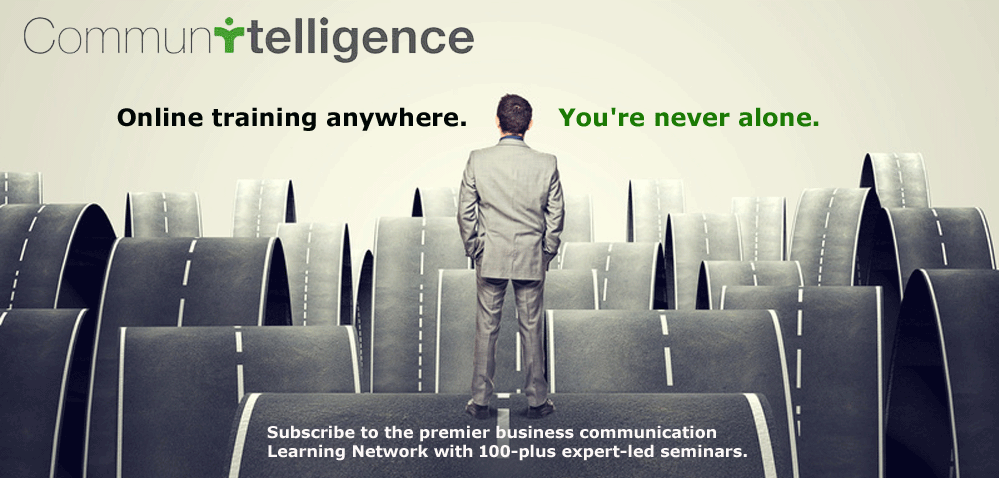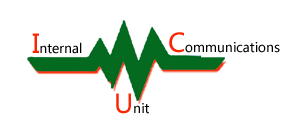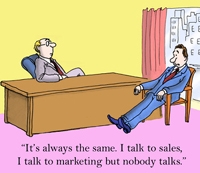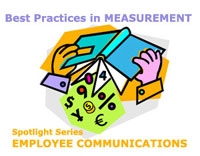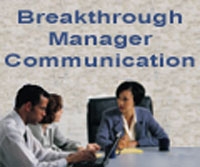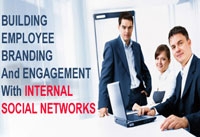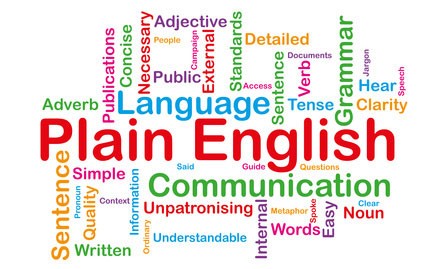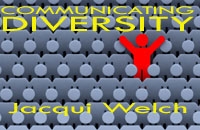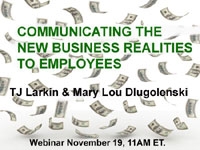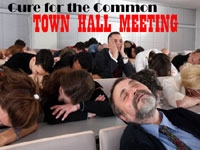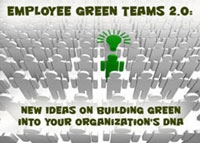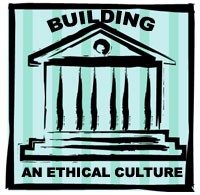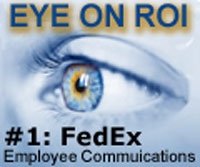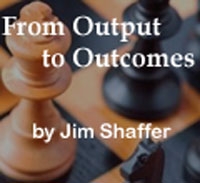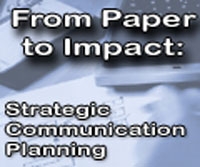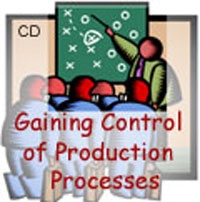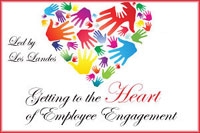Tell me and I may hear. Tell me and let me add my 2-cents and now it’s our decision; I’m all in. Yes, one of the most powerful and proven catalysts to engagement is simply involving employees in generating ideas that address an organization’s most pressing challenges. By opening up these important conversations to employees, individuals feel like they’re part of the business, and not watching from the sidelines.
Attend this webinar to see how a diverse range of companies are using co-creation — also called crowd-sourcing and open innovation — to achieve significant improvements in both employee engagement and business outcomes.
Borrowing from his experience working with leading companies, Preston Lewis, co-founder and director of San Francisco’s Bonfire, will explain how to use communication co-creation and audience-centricity to effectively drive creativity, innovation and employee engagement within your company.
You will learn how to:
- Position communication as a catalyst for co-creation
- Build a holistic engagement strategy, supported by multidisciplinary communications
- Use emerging crowd-sourcing technologies to drive employee engagement efforts
- Increase participation (both employee and customer) in key brand initiatives
About the Speaker:
 Preston Lewis is an expert in branding, employee engagement and internal communications. A sought-after speaker, Preston is an energetic and creative leader who helps companies understand how to solve complex problems through communication and design.
Preston Lewis is an expert in branding, employee engagement and internal communications. A sought-after speaker, Preston is an energetic and creative leader who helps companies understand how to solve complex problems through communication and design.
Preston and his team have designed and implemented communication campaigns for some the world’s largest and most successful companies, including Starbucks, Genentech, Nortel Networks, NASDAQ, and HP.
Walgreen’s social intranet, The Wall, launched in 2013 and is in many ways already beginning to prove itself as a digital workplace where employees become informed, connected and engaged in a whole new way. As expected, the journey has had its challenges, and this webinar is designed to make that journey a little smoother for those on the same path.
Whether your organization is thinking about, has started or already has an internal social intranet, don’t miss this very educational “behind-the-firewall” look at what it takes to launch and build a social intranet that delivers measurable business value.
Learning topics:
- First, be realistic
- Expect and embrace disruption, and help others do the same
- Continually build the case for how your social intranet will drive business results
- Keep your key partners close, and your leaders closer
- Develop a clear, compelling, evolving communication strategy
And five more!
Presented by:
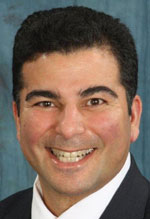 James R. Warda, Internal Communications Team Lead, Walgreens, brings a comprehensive communication background with Fortune 100 companies, including Allstate, Baxter, Boeing and Walgreens. As a Gold Quill award-winning communication leader, James focuses on achieving business results through an attention to people, both from a leadership and emotional perspective. And, as James explains, “it is this attention that builds trust, the foundation of any successful relationship – and communication effort.” James is also the author of “Where Are We Going So Fast?” and also writes a “Disney Moments” blog for celebrationspress.com. In addition, he has been a speaker and contributor for Chicken Soup for the Soul Enterprises, the “Chicago Tribune” and Pioneer Press.
James R. Warda, Internal Communications Team Lead, Walgreens, brings a comprehensive communication background with Fortune 100 companies, including Allstate, Baxter, Boeing and Walgreens. As a Gold Quill award-winning communication leader, James focuses on achieving business results through an attention to people, both from a leadership and emotional perspective. And, as James explains, “it is this attention that builds trust, the foundation of any successful relationship – and communication effort.” James is also the author of “Where Are We Going So Fast?” and also writes a “Disney Moments” blog for celebrationspress.com. In addition, he has been a speaker and contributor for Chicken Soup for the Soul Enterprises, the “Chicago Tribune” and Pioneer Press.
 Steve Cohen, Internal Digital Content Manager, develops, manages and publishes the news and company information on all internal company portals at Walgreens, but also develops the content strategies and roadmap for the company’s new social intranet, The Wall. Steve has been with Walgreens since 2006, and with his background in journalism, he created the first non-anonymous news and executive blogs for an audience of more than 247,000 team members. His passion to connect people to information and each other also played out in his time as managing editor of Facets, an online-only, bimonthly lifestyle magazine.
Steve Cohen, Internal Digital Content Manager, develops, manages and publishes the news and company information on all internal company portals at Walgreens, but also develops the content strategies and roadmap for the company’s new social intranet, The Wall. Steve has been with Walgreens since 2006, and with his background in journalism, he created the first non-anonymous news and executive blogs for an audience of more than 247,000 team members. His passion to connect people to information and each other also played out in his time as managing editor of Facets, an online-only, bimonthly lifestyle magazine.
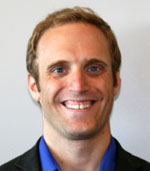 Chris Catania, Internal Social Media Manager, manages the internal enterprise social media programs and employee communities at Walgreens. Prior to joining Walgreens, he helped big brands develop and implement social media marketing and consumer-engagement initiatives. He also runs Live Fix Media, an all-consuming experiment exploring the intersection of life, live music and online communities.
Chris Catania, Internal Social Media Manager, manages the internal enterprise social media programs and employee communities at Walgreens. Prior to joining Walgreens, he helped big brands develop and implement social media marketing and consumer-engagement initiatives. He also runs Live Fix Media, an all-consuming experiment exploring the intersection of life, live music and online communities.
The profession of corporate communications is steeped with tradition. Though there are many new channels, we tend to use them to say the same old things. Employees have a multitude of ways to express themselves after hours, but at work, they tend to have much less voice. This imbalance leaves the unstated impression that all the important communications is done by the professionals.
Heather Rim, vice president of global corporate communications at Avery Dennison, and her team continually look for ways to expand employee voice and make communications fresh and fun. Blending simple ideas with the power of communication networks, her team is shaking up old ideas about what traditional communications looks like, includes and accomplishes. In this special webinar, she will show some of the unique Avery Dennison communication programs that are winning high marks from employees and leadership – and would be worth considering for your organization.
What you will learn:
- Starting with the philosophy – corporate communications should never be boring
- Behind “The Beat,” a global employee sounding board that just keeps growing
- Just launched: an intranet built on Google
- How a CEO video blog is sparking unexpected impact
- Blending formal and informal communications – Letting employees tell their own stories
- Less is more when it comes to social media policy
Presented by:
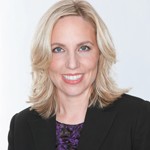 Heather Rim is vice president of Global Corporate Communications for Avery Dennison Corporation. She was named to her current position in January 2011. Heather joined Avery Dennison in 2010 as senior director, Internal Communications.
Heather Rim is vice president of Global Corporate Communications for Avery Dennison Corporation. She was named to her current position in January 2011. Heather joined Avery Dennison in 2010 as senior director, Internal Communications.
Heather is responsible for the strategic direction and management of all aspects of corporate communications for Avery Dennison including employee communications, corporate brand management, crisis communications, social media and digital communications, corporate media relations, and corporate philanthropy.
Before joining Avery Dennison, Heather held the position of vice president, Communications for the Disney ABC Television Group, where she designed and implemented global communications strategies to inform and engage employees across Disney’s entertainment and news television properties. Previously, she progressed through Corporate Communications, Marketing and Investor Relations roles at companies including WellPoint, Countrywide and KPMG.
Heather received a master’s degree in communications management from the University of Southern California and a bachelor’s degree in marketing from Azusa Pacific University. She serves on the boards of the United Way of Greater Los Angeles and the Pasadena Symphony, and is a member of the Arthur Page Society.
 Kristin Wong serves as the lead for all corporate internal communications programs and channels. She drives efforts to ensure the company’s employer brand is activated throughout key employee touch points including the enterprise portal, global employee ambassador team, values and ethics programs, and corporate town halls.
Kristin Wong serves as the lead for all corporate internal communications programs and channels. She drives efforts to ensure the company’s employer brand is activated throughout key employee touch points including the enterprise portal, global employee ambassador team, values and ethics programs, and corporate town halls.
Prior to joining the company, Kristin worked for The Walt Disney Company where she assisted in the development of internal communications programs for Disney’s ABC television business. She received a master’s degree in communication management from the University of Southern California and also holds a bachelor’s degree in media studies from Pomona College of the Claremont Colleges. Outside of work, Kristin is a blogger and pop culture junkie who’s passionate about the technology trends that will shape our digital future.
Ok, if we professional communicators would all come clean, we would admit we’ve been paying a lot more attention to the sexy new digital communication workplace tools than we have to that oldest but most important social medium, face-to-face communications.
Unfortunately, practice and research says ignoring manager communication is a bad idea. In the midst of so much change, workplace stress, confusion and mistrust, there is a powerful human case to be made for attending to this most basic kind of communication. Gallup research shows that “managers from hell” are creating active disengagement, costing the U.S. an estimated $450 billion to $550 billion annually.
According to ROI Communication’s annual benchmark survey:
- One in four managers is not considered a credible source of information
- Only 55% offer recognition and appreciation for a job well done
- Only 25% clearly understand their communication role (which coincides with the fact that only 27% receive communication training), and
- Only 18% are measured for communication performance in their performance reviews
Roger D’Aprix has been preaching the face-to-face communication mantra since he was a communication manager at Xerox in the late 1970s. He’s convinced today’s workers want and expects more than command and control, top-down communication. In fact, if face-to-face communication is failing, there is an excellent chance that all of the other forms of communication in the organization are also failing.
Drawing from his new book, Creating an Engaged Workforce: the Face-to-Face Communication Toolkit, Roger will arm you with the basic strategies and tools to either launch or reignite your organization’s manager communication program in ways that will prepare them to fulfill the all-important role of interpreter for their people. It’s time to fire up your face-to-face communication program.
What You Will Learn:
- Why human satisfaction with work and business success both demand a face-to-face strategy for delivering critical issues to employees
- How to build the business case and form the key team you need to seriously impact face-to-face communication in your organization
- Why too many face-to-face communication programs fail and the secret sauce of those that sing
- The key tools and processes you need to make your face-to-face communication program a winner
Presented by:
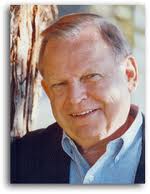 Roger D’Aprix is internationally known as a practitioner in the theory, strategy and practice of employee communication. His ground-breaking work at Xerox Corporation beginning in the 1970s qualifies him as one of the pioneers in employee engagement. As a communication consultant, lecturer and author he has assisted scores of Fortune 500 companies in developing their communication strategies and designing their communication training.
Roger D’Aprix is internationally known as a practitioner in the theory, strategy and practice of employee communication. His ground-breaking work at Xerox Corporation beginning in the 1970s qualifies him as one of the pioneers in employee engagement. As a communication consultant, lecturer and author he has assisted scores of Fortune 500 companies in developing their communication strategies and designing their communication training.
In 1998 IABC named him ‘one of the most influential thinkers in the communication profession in the last 25 years.’ He was named an IABC Fellow, that organization’s highest honor, in 1978. For 15 years he held senior positions with two of the leading human resources consulting companies. He served as vice president and global practice leader for Towers Perrin’s human resource communication practice and as principal and service developer for Mercer Human Resource Consulting.
Before that, he led employee communication for Xerox Corporation and held executive communication positions at General Electric and Bell and Howell. Presently, in addition to his own consultancy, D’Aprix & Co., he is affiliated with ROI Communication as a member of its advisory board. ROI is a global consultancy that specializes in internal communication strategy and practice. He divides his time between residences in Rochester, New York and New York City.
Learn how to conduct a communication audit that will provide the hard data you and your management need to make the right decisions.
Scrambling to meet the next deadline for the employee pub. Running e-mail copy through the approval ringer. Tying up all the logistical loose ends for next week’s town hall meeting. There’s plenty to keep you busy when you work in employee communications. But are you sure the tactics you’ve chosen are the best ones for reaching employees? And what about strategy? What do employees really need to know to do their jobs?
Before you spend scarce company resources on employee communications, you’d better know the answers to these and many other questions. And a communication audit can give you those answers.
Why a communications audit? How does it work? How can it help boost the bottom line? Where to focus? What to ask?
This session answers all these questions, plus gives you an inside look at how one company audited its employee communications program, what they learned and how they applied their learnings. Hear from the communicator who led the project and the measurement experts who helped her succeed.
In just 90 minutes, you’ll learn how to conduct a communication audit that will put your program on the right track.
Key learning topics:
- How to make the decision to conduct a communication audit — often the most difficult step in the process — and how to sell management on the idea
- How to know what communication issues to focus on
- How to write powerful questions that reveal the most useful information
- How to analyze data, so you know the most important items to act on
- How to develop and implement a plan of action — the greatest benefit of a communication audit
Plus: Robert, Katrina and Kim answer real-world questions on:
- The pros and cons of Web surveys vs. paper
- The percentage of responses should you expect in a survey and how to ensure a statistically significant number of responses
- Recommendations on alternate communication channels, such as blogs and wikis
- How to learn if your employees really want to end their employee newsletter
- The real costs behind a communication audit
About your seminar leaders:
 Robert Holland, ABC, Holland Communication Solutions, has more than 17 years of experience in organizational communications, including employee communication planning, publication management, consulting, media relations and change communication. He is co-leader of the Communitelligence Internal Communications community and a frequent contributor to several national and international professional journals, including the Journal of Employee Communication Management. His column “Communication at Work” appears on the Business Channel of Richmond.com every two weeks. He is author of Prove Your Worth: The Complete Guide to Measuring the Business Value of Communication, published by Ragan Communications. Robert earned IABC accreditation in 1992. His bachelor’s degree in mass communications is from Virginia Commonwealth University in Richmond, Va.
Robert Holland, ABC, Holland Communication Solutions, has more than 17 years of experience in organizational communications, including employee communication planning, publication management, consulting, media relations and change communication. He is co-leader of the Communitelligence Internal Communications community and a frequent contributor to several national and international professional journals, including the Journal of Employee Communication Management. His column “Communication at Work” appears on the Business Channel of Richmond.com every two weeks. He is author of Prove Your Worth: The Complete Guide to Measuring the Business Value of Communication, published by Ragan Communications. Robert earned IABC accreditation in 1992. His bachelor’s degree in mass communications is from Virginia Commonwealth University in Richmond, Va.
- Katrina Gill is president and founder of Gill Research LLC, a full-service research and consulting firm specializing in communication metrics, audits and employee/organizational research. Katrina has more than 14 years of diverse research experience, from the planning and development of projects through the presentation of results and recommendations for action. Katrina is formally educated in research methodology and has completed post-graduate study on a doctoral track in clinical psychology at the University of Missouri. A frequent speaker, workshop leader and author on strategic research and measurement, Katrina has taught undergraduate and graduate-level courses. She is a member of the American Marketing Association and the International Association of Business Communicators.
- Kim Hall is a communications consultant with Wells Fargo & Company, supporting internal communications for a division of 5,500 employees. She partners with managers in business units, human resources, marketing and public relations to develop integrated communication strategies that help the organization meet its goals. With 10 years in communications in the corporate and nonprofit sectors, Kim has worked on fundraising campaigns, grant writing, newsletter production, change communications and communications measurement. She has a bachelor’s and a master’s degree in English and is a member of the International Association of Business Communicators.
Study after study confirms the link between good manager communication and engaged employees. Listen to this webinar and learn what managers can do to become better communicators – and stronger leaders. You’ll learn how managers can change employee attitudes and behaviors, the type of information employees demand, and which communication resources leading organizations provide managers. You’ll leave the session with practical tips, tools and frameworks that managers can apply immediately and insights into what separates outstanding managers from the rest.
What You Will Learn:
- Communication competencies every manager needs
- How to keep managers and employees informed and engaged
- Winning managers’ support for communication
- The best way to alienate managers
- How to convey information, field challenges and brainstorm solutions – in under 15 minutes
Questions that are answered:
- What are leading organizations doing to enhance manager communication?
- What feedback should communicators solicit from managers?
- What do employees want most from their managers?
- What can communicators do to help managers succeed?
Who Should Attend:
- Communications professionals who want to enhance their partnership and value to the business
- First line supervisors and managers who want to take their staff communications to the next level
Instructor:
 Andy Szpekman provides human resource management and communication research, strategies and tools to improve business performance. His clients include Bank of America, BC Hydro, Cardinal Health, McKinsey & Co., Microsoft, News Corporation, Scholastic and Wachovia.
Andy Szpekman provides human resource management and communication research, strategies and tools to improve business performance. His clients include Bank of America, BC Hydro, Cardinal Health, McKinsey & Co., Microsoft, News Corporation, Scholastic and Wachovia.
Earlier in his career, he led HR communication at Bank of America, served as communications manager for a global division of Warner-Lambert, and was a senior HR and communications consultant with Brecker & Merryman, Inc.
Andy is active in the Council of Communication Management and a former Officer of the Metropolitan New York Association of Applied Psychology. His work has been featured in national news and business publications and leading trade journals. He holds a B.A. in psychology from William Paterson University and an M.A. in organizational psychology from Columbia University.
Internal Social Networks are starting to appear inside some organizations. Early adopters are finding positive business results by helping employees connect through “internal Facebooks.” By effectively harnessing these new networks, organizations are seeing positive impacts on internal brand building, as well as employee engagement, satisfaction and motivation — which leads to higher levels of productivity, revenue, and profit.
But the world of the internal social network is the opposite of command & control. That said, reasonable guidelines, a group of informal influencers, and a posse of community managers who help keep the dialog lively and the network on track.
It’s clear that no matter where your company is on the social media ladder, social networks and Web 2.0 skills are becoming a part of today’s work landscape. All businesses need to be aware of how to deploy networks for higher ROI, collaboration, innovation and customer service.
Listen to this webinar replay to learn what works and what doesn’t in this brave new world of internal social networks from companies that are already figuring out the path to success.
What You Will Learn:
- How to avoid pitfalls and leverage opportunities as you venture into the world of building and managing social networks and a Web 2.0 savvy workforce
- How best to overcome cultural barriers and introduce social networks into traditional organizations
- How to handle the sensitives of employee privacy; governing participants’ behavior; and ensuring that participants balance professional and social time.
- How to set up strategic, internal alliances which mitigate concerns of Command & Control leaders and help build positive momentum
Reasons to Learn About Internal Social Networks
- Get more out of your existing resources by finding, unlocking, and engaging hidden employee intellectual capital Reduce company cost, waste, travel expenditures, and carbon footprint
- Establish, grow and maximize a culture savvy with social networks.
- Further your PR and Branding dollars by unleashing the silent experts that exist within your companies today
- Enhance your employees’ motivation and satisfaction in your company as a place to work
- Develop products and offerings faster, without regard to organizational silo or organization
- Build a more sustainable company which should well serve your shareholders for years to come
 Lee Aase is manager of Syndications and Social Media for Mayo Clinic. His team’s focus is developing quality medical news resources for mainstream media, and using social media applications to create more in-depth, extended relationships directly with key stakeholders. You can see examples of Mayo Clinic’s social media offerings through the Mayo Clinic News Blog at http://newsblog.mayoclinic.org/
Lee Aase is manager of Syndications and Social Media for Mayo Clinic. His team’s focus is developing quality medical news resources for mainstream media, and using social media applications to create more in-depth, extended relationships directly with key stakeholders. You can see examples of Mayo Clinic’s social media offerings through the Mayo Clinic News Blog at http://newsblog.mayoclinic.org/
By night, Lee is Chancellor of Social Media University, Global (SMUG), a free online higher education institution that provides practical, hands-on training in social media for lifelong learners. Visit SMUG.
Prior to joining Mayo Clinic in 2000, Lee spent more than a decade in political and government communications at the local, state and federal level. He received his B.S. in Political Science from Mankato (Minn.) State University in 1986.
 Polly Pearson is VP Employment Brand and Strategy Engagement, EMC Corporation.
Polly Pearson is VP Employment Brand and Strategy Engagement, EMC Corporation.
Polly Pearson is an employment branding leader passionate about Web 2.0 engagement tools with nearly twenty years of FORTUNE 500-level experience spanning marketing, human resources, branding, investor relations, public relations, advertising, and professional speaking.
Her employment branding work has recently been featured in media outlets such as CBS News, National Public Radio, Financial Times, Boston Herald, Dice.com and in the new Penguin Press business book, “Closing the Engagement Gap; How Great Companies Unlock Employee Potential For Superior Results.”
Her leadership in Investor Relations contributed to EMC being the NYSE Stock of the Decade for the 1990s, when it outperformed all other listed stock and increased in value nearly 90,000 percent. Polly was the first woman at EMC to be promoted to Vice President. Polly writes a popular blog dedicated to careers, culture and cool.
 Paul Pedrazzi heads a small team of professionals (AppsLab) focused on emerging technology and novel business practices. Most recently, his interest has been on Web 2.0, Enterprise 2.0 and the transformation of the enterprise in light of these new modes of operation. Additionally, Mr. Pedrazzi spearheaded the creation of Oracle’s first two social network projects; Connect for internal users and Mix for customers, partners and media. Before heading AppsLab he ran product strategy for PeopleSoft’s Portal Product Suite, catapulting the flagship product into the leadership position in Gartner’s annual product evaluation. Prior to PeopleSoft, Mr. Pedrazzi held various other product strategy, marketing and consulting roles in organizations such as Deloitte & Touche LLP and Groundswell, Inc. Mr. Pedrazzi holds a BS in Managerial Economics from the University of California at Davis.
Paul Pedrazzi heads a small team of professionals (AppsLab) focused on emerging technology and novel business practices. Most recently, his interest has been on Web 2.0, Enterprise 2.0 and the transformation of the enterprise in light of these new modes of operation. Additionally, Mr. Pedrazzi spearheaded the creation of Oracle’s first two social network projects; Connect for internal users and Mix for customers, partners and media. Before heading AppsLab he ran product strategy for PeopleSoft’s Portal Product Suite, catapulting the flagship product into the leadership position in Gartner’s annual product evaluation. Prior to PeopleSoft, Mr. Pedrazzi held various other product strategy, marketing and consulting roles in organizations such as Deloitte & Touche LLP and Groundswell, Inc. Mr. Pedrazzi holds a BS in Managerial Economics from the University of California at Davis.
Who Should Purchase:
- Individuals responsible for employee communications, public relations, IT, corporate affairs, human resources, media relations, and issues management.
“The two case studies were excellent. Polly was a wonderful presenter; Paul was good too.”
“We’re in the process of developing a number of employee engagement communities so very timely.”
At Cisco, they’ve changed the way they use words. It’s saving them money and helping them work together better. It’s connecting the internal culture to the business in deeper, more meaningful ways. And that’s helping them serve customers better and sell more.
In this session, Mark Buchanan, program lead for Cisco’s brand language initiative, paints a picture of how Cisco is changing the way 75,000 employees are using words across a $130 Billion business. He’ll walk you through how the brand language team set the plan in motion and made lasting changes. He’ll include practical tips and share insights, successes, and challenges. And he’ll give you his thoughts about how the lessons from Cisco can make a difference for your business.
The session includes:
- Evaluating the opportunity
- Aligning your voice with your business
- Connecting with your audience
- Scaling the program
- Making it stick
Presented by:
 Mark Buchanan is the program lead for brand language at Cisco. He’s helping the company use language that is simpler and more distinctive. And he’s helping bring empathy back to a technology company that has always cared about people, but has found those values challenged by rapid growth and increasingly complex technology. He’s worked with Sales, Marketing, Engineering, Services and Corporate Communications and has seen impressive results across every function. Together, Mark and the people at Cisco are changing the culture of language and communications, around the world for 75,000 employees, 50,000 contractors and vendors, across a $130 billion business.
Mark Buchanan is the program lead for brand language at Cisco. He’s helping the company use language that is simpler and more distinctive. And he’s helping bring empathy back to a technology company that has always cared about people, but has found those values challenged by rapid growth and increasingly complex technology. He’s worked with Sales, Marketing, Engineering, Services and Corporate Communications and has seen impressive results across every function. Together, Mark and the people at Cisco are changing the culture of language and communications, around the world for 75,000 employees, 50,000 contractors and vendors, across a $130 billion business.
The data is in!
- Diversity is a source of competitive advantage
- Diverse teams arrive at better, more innovative solutions than monolithic teams
- Diversity is not the same as affirmative action or any other government mandated equality program – it’s better
- Diversity makes common, moral and good business sense
You are a believer. Great.
But while your energy and enthusiasm on the topic of diversity are required, they are not sufficient. You need a rock solid communication plan and the know-how to execute it in order for diversity to take root and stay rooted in the fabric of how the company you work for does business.
What You Will Learn:
1. Explaining the business case
2. Reinforcing the values and visions of the diversity effort
3. Identifying the WIIFM (what’s in it for me) for employees
4. Defining diversity
5. Communicating expectations
6. Demonstrating ongoing commitment
Instructor:
 Jacqueline M. Welch is Vice President, Employee and Organizational Effectiveness for Rock-Tenn Company, a $2.2 billion Norcross, Georgia headquartered manufacturer of packaging products, merchandising displays and recycled paperboard. Rock-Tenn Company operates more than 90 facilities throughout the United States, Argentina, Canada, Mexico and Chile.
Jacqueline M. Welch is Vice President, Employee and Organizational Effectiveness for Rock-Tenn Company, a $2.2 billion Norcross, Georgia headquartered manufacturer of packaging products, merchandising displays and recycled paperboard. Rock-Tenn Company operates more than 90 facilities throughout the United States, Argentina, Canada, Mexico and Chile.
As Vice President of Employee and Organizational Effectiveness, Jacqui is responsible for talent acquisition, performance management, career development, learning and development, succession planning, organization development, employee relations, compliance, union relationships, corporate communications, and workplace practices such as corporate citizenship and diversity for a workforce of 10,000 employees. Jacqui reports directly to the CEO and is an officer of the company.
Jacqui’s expertise is in developing, implementing and institutionalizing people programs, practices and policies that support business objectives and optimize organizational culture. This includes developing customer-focused business strategy for the human resource function and building line capacity to manage the people asset.
Who should register:
- Communications, HR, public relations and managers and supervisors who want to help take their organization’s diversity program to the next level
In today’s dynamic marketplace, businesses simply cannot afford to leave strategy execution to chance. Organizations that succeed will be the ones that can effectively mobilize and engage their employees in implementing new business strategies to produce immediate value for customers. Making a solid case for the new business realities to employees is critical for any organization to survive and thrive. Employees who have seen change initiatives fail in the past are likely to avoid risks associated with change. They become roadblocks when communicating the new business realities to employees. Employees must buy into any business’ priorities to succeed.
What You Will Learn:
- The three biggest mistake companies make when communicating bad news
- Establishing and communicating performance expectations and accountability.
- Building trust with employee involvement.
- Establishing team norms for how work gets done.
- Modeling effective virtual behavior across boundaries with all stakeholders.
Who Should Attend
Individuals responsible for corporate communications, public relations, corporate affairs, human resources, employee communications, media relations, and issues management.
Presented by:
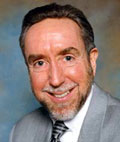 Dr. TJ Larkin and his business partner, Sandar, began Larkin Communication Consulting in 1985. The Larkins help large companies communicate major change to employees. Clients include: ABB, AT&T, Bank of America, Bankers Trust, Bell Labs, BHP Billiton, Boeing, BP, Caltex, DaimlerChrysler, ExxonMobil, GM, ICI, NASA, National Australia Bank, and PricewaterhouseCoopers. TJ and Sandar wrote the book, Communicating Change, now a McGraw-Hill Bookstore bestseller. Their paper, “Reaching and Changing Frontline Employees,” published in the Harvard Business Review has sold more than 40,000 reprints. The most recent papers by the Larkins can be downloaded, at no charge, from their Web site (Publications Page). TJ has a Ph.D. in communication from Michigan State University, and a B.Phil. in sociology from the University of Oxford.
Dr. TJ Larkin and his business partner, Sandar, began Larkin Communication Consulting in 1985. The Larkins help large companies communicate major change to employees. Clients include: ABB, AT&T, Bank of America, Bankers Trust, Bell Labs, BHP Billiton, Boeing, BP, Caltex, DaimlerChrysler, ExxonMobil, GM, ICI, NASA, National Australia Bank, and PricewaterhouseCoopers. TJ and Sandar wrote the book, Communicating Change, now a McGraw-Hill Bookstore bestseller. Their paper, “Reaching and Changing Frontline Employees,” published in the Harvard Business Review has sold more than 40,000 reprints. The most recent papers by the Larkins can be downloaded, at no charge, from their Web site (Publications Page). TJ has a Ph.D. in communication from Michigan State University, and a B.Phil. in sociology from the University of Oxford.
Mary Lou Dlugolenski, with nearly 20 years of experience, has established herself as a solid communications professional in roles spanning employee communication, public relations, marketing communication, change communication, and crisis management. She has worked in a number of industries including healthcare, manufacturing, engineering, advertising and financial services. Mary Lou has been with MassMutual for 18 months and serves as the company’s vice president of strategic enterprise communication. Recognizing employee communication as a critical business driver, Mary Lou and her team lead a strategy of employee engagement and culture change that creates dialogue between executives and employees
through well-orchestrated communication tactics. Prior to joining MassMutual, Mary Lou managed internal and external communication at various public companies, domestic and international, including Philips, GE, ADVO and
Alstom. Mary Lou lives in North Granby, Conn., with her husband and two children.
Times have changed. In today’s world, communication moves at the speed of light. People want information, and they want it now. On top of that, they want it in more creative formats than before, thanks to the social media tools taking the world by storm. And your employees are no different.
In this webinar, you will hear from two internationally recognized companies – Monsanto and Sprint – that have taken major steps recently to meet employee expectations with major initiatives to improve their employee communication strategies, tactics and tools.
Katie Sauer from Monsanto will talk about the evolution during the past two years since they launched a complete overhaul of the company’s employee communications. Specifically, she will describe Monsanto’s online news publication and why it is now regarded as a best practice in the profession.
She will explore a number of provocative questions.
- Are your employee news publication and intranet meeting their needs?
- Are you giving them honest facts or corporate-speak?
- Are you sending them weekly or monthly publications, or are you giving them up-to-the minute information?
- Are you communicating things your way or their way?
Jennifer Sniderman from Sprint will talk about how the company decided to seize unprecedented opportunity to build on their efforts to revolutionize the customer experience and use the same approach to facilitate conversations among employees and help surface the “why” behind key decisions. By blurring the lines between Sprint Space (internal social media platform) and i-Connect (the company-wide intranet) Sprint continues to drive authenticity and engage key employee influencers.
In this presentation you will learn how Sprint’s News 2.0 strategy is:
- Activating our brand from the inside out, by making employees active participants in revolutionizing the customer experience; tapping collective wisdom, acting on what we learn
- Spreading optimism at new speeds
- Driving confidence in leadership at all levels
- Decreasing communications clutter and reaching employees in ways they’ve embraced outside of work
Both of these remarkable case studies underscore the need for a plan that allows you to communicate with your employees—and vice versa—in the honest, simple and fast way they expect. At this webinar, you will learn how to create an online communication mechanism that will become an integral part or your employees’ lives.
What You Will Learn:
- How to write and produce stuff your employees will want to read—and trust
- How to integrate social media tools into your employee communication strategy
- How to get legal and management backing you
- How to use your intranet publication to change your company’s culture
Presented by:
 Katie Sauer is a communications manager for Monsanto, where she is responsible for writing content for both the company’s employee news site and corporate Web site. She has worked for Monsanto since earning her bachelor’s in communication from Truman State University in Missouri. She worked in sales and marketing for Monsanto before moving to public affairs in 2006.
Katie Sauer is a communications manager for Monsanto, where she is responsible for writing content for both the company’s employee news site and corporate Web site. She has worked for Monsanto since earning her bachelor’s in communication from Truman State University in Missouri. She worked in sales and marketing for Monsanto before moving to public affairs in 2006.
 Jennifer Sniderman oversees employee communications channels and editorial including Sprint’s corporate Intranet and Sprint’s social media platform. She is responsible for developing the news strategy and messaging architecture for enterprise employee communications.Jennifer leads the team responsible for Sprint’s IABC Gold Quill award-winning leadership communications program and is the managing editor of i-Lead, Sprint’s bi-weekly online newsletter. Jennifer is also the executive producer/writer of a recurring talk-show broadcast to the desktop of Sprint managers nationwide. In her role at Sprint, Jennifer has developed numerous multimedia campaigns and interactive communications solutions. She is currently working on Sprint’s social media strategy for employee communications and enhancements to Sprint’s integrated online leadership community.
Jennifer Sniderman oversees employee communications channels and editorial including Sprint’s corporate Intranet and Sprint’s social media platform. She is responsible for developing the news strategy and messaging architecture for enterprise employee communications.Jennifer leads the team responsible for Sprint’s IABC Gold Quill award-winning leadership communications program and is the managing editor of i-Lead, Sprint’s bi-weekly online newsletter. Jennifer is also the executive producer/writer of a recurring talk-show broadcast to the desktop of Sprint managers nationwide. In her role at Sprint, Jennifer has developed numerous multimedia campaigns and interactive communications solutions. She is currently working on Sprint’s social media strategy for employee communications and enhancements to Sprint’s integrated online leadership community.
 Les Landes is President of Landes & Associates. His firm provides services in the areas of planning, marketing, public relations, organizational communications, team development, and quality improvement systems. Prior to starting his own firm, Les worked with Pet Incorporated where he served for 10 years as the company’s Director of Communications with responsibilities for corporate advertising, employee communication, public and media relations, consumer affairs, and creative services. He also played a major role in developing and implementing Pet’s quality management system.
Les Landes is President of Landes & Associates. His firm provides services in the areas of planning, marketing, public relations, organizational communications, team development, and quality improvement systems. Prior to starting his own firm, Les worked with Pet Incorporated where he served for 10 years as the company’s Director of Communications with responsibilities for corporate advertising, employee communication, public and media relations, consumer affairs, and creative services. He also played a major role in developing and implementing Pet’s quality management system.
“This is exactly the kind of specific, here’s how we did it, replicable information (that is often difficult to find) that we were looking for. Really great stuff. We got a lot of ideas and also confirmed that in many ways, we are on the right track as well.”
“Real-life examples of the inner workings of two companies’ intranets. Informative speakers. Good tips.”
The problem is how to get your organization’s top executives out in front of as many employees as possible and provide a genuine communication exchange. The solution, for the past 100 years or so, is what we now call the “town hall” meeting, even though companies are not towns, and hardly ever do they occur in halls.
For employees and top executives, town hall meetings can be the best of times, or the worst of times, depending on how they’re handled. This webinar will surface some tried and true ways to create a mass employee meeting that allows a genuine exchange of ideas, issues, concerns and opportunities. You’ll also get a good list of what you absolutely should not do when you plan and produce your next town hall meeting.
What You Will Learn:
- Checklist on planning an effective series of town hall meetings
- Best practices on prepping your executives
- Techniques to break the ice and make the meetings fun and anything but boring
- Planning for tough questions and awkward moments
- Crucial tasks after the event
- Tips and techniques on using the newest technology to simultaneous global town-hall meetings
Presented by:
 Les Landes is President of Landes & Associates. His firm provides services in the areas of planning, marketing, public relations, organizational communications, team development, and quality improvement systems. Prior to starting his own firm, Les worked with Pet Incorporated where he served for 10 years as the company’s Director of Communications with responsibilities for corporate advertising, employee communication, public and media relations, consumer affairs, and creative services. He also played a major role in developing and implementing Pet’s quality management system.
Les Landes is President of Landes & Associates. His firm provides services in the areas of planning, marketing, public relations, organizational communications, team development, and quality improvement systems. Prior to starting his own firm, Les worked with Pet Incorporated where he served for 10 years as the company’s Director of Communications with responsibilities for corporate advertising, employee communication, public and media relations, consumer affairs, and creative services. He also played a major role in developing and implementing Pet’s quality management system.
 Veronica Apostolico is Director, Internal Communication, Global Operations, for Smith & Nephew. Veronica has 18-plus years in the communications field and has worked across all communications disciplines, internal and external, but has focused mainly on internal (change management, leadership coaching, crisis comms, employee comms). She has held communications positions with Warner-Lambert (now Pfizer), Ciba-Geigy (now Novartis – part of the team that led communications during the merger), Knoll Pharma (now Abbott) and RTI International. Veronica has also had her own communications consultancy for 5 years with clients including Aventis, Merck and J&J.
Veronica Apostolico is Director, Internal Communication, Global Operations, for Smith & Nephew. Veronica has 18-plus years in the communications field and has worked across all communications disciplines, internal and external, but has focused mainly on internal (change management, leadership coaching, crisis comms, employee comms). She has held communications positions with Warner-Lambert (now Pfizer), Ciba-Geigy (now Novartis – part of the team that led communications during the merger), Knoll Pharma (now Abbott) and RTI International. Veronica has also had her own communications consultancy for 5 years with clients including Aventis, Merck and J&J.
Reduce waste, cut costs and reduce environmental impact, increase employee engagement and retention, bolster your brand … what’s not to like about infusing green and sustainability into your organization?
And so it is no wonder that companies, large and small across all industries, are launching and supporting employee green teams to add arms and legs to green and responsibility goals. But, as this webinar underscores, green teams and social innovation do not just sprout and blossom without coordination, recognition, communications and a basket full of other good practices.
Whether you are just thinking about launching an employee green team, or you would like to ratchet yours up to the next level, learn the latest strategies from our three experts with a wealth of what works, and what doesn’t.
What You Will Learn:
- Building and communicating the business case for green teams
- How to grow green teams without dampening the grass-roots passion that they started with
- Big picture overview of some best practices from other leading companies, including Bloomberg, EMC, Ingersol Rand and Genentech
- How to create unique recognition and training programs (specific to your corporate culture)
- How to connect green teams to customers and communities
- What are some pitfalls to watch out for?
- How should you measure success?
Learn how the eBay Green Team, started by a small group of employees, has grown to more than 2,400 eBay employeees in 23 countries and 225,000 eBay buyers and sellers. The program was awarded “Best Employee Engagement Strategy” by the 2010 Social Innovation Awards.
Presenters:
 Krista Van Tassel: As the newest member of the Wells Fargo Environmental Affairs team, Krista supports our many Green Teams, who promote environmental innovation and educate team members about their role in supporting our sustainability efforts. Before coming to Wells Fargo, Krista earned her MBA in International Business at Georgetown University. She’s also worked in a variety of sustainability and marketing positions in both the nonprofit (Net Impact) and for-profit (Sun Microsystems) worlds, and served as the Cupertino Campus Chair for Hewlett-Packard’s 2002 Charitable Giving Campaign. In her oh-so precious free time, she enjoys running, reading and volunteering.
Krista Van Tassel: As the newest member of the Wells Fargo Environmental Affairs team, Krista supports our many Green Teams, who promote environmental innovation and educate team members about their role in supporting our sustainability efforts. Before coming to Wells Fargo, Krista earned her MBA in International Business at Georgetown University. She’s also worked in a variety of sustainability and marketing positions in both the nonprofit (Net Impact) and for-profit (Sun Microsystems) worlds, and served as the Cupertino Campus Chair for Hewlett-Packard’s 2002 Charitable Giving Campaign. In her oh-so precious free time, she enjoys running, reading and volunteering.
 JD Norton has been with eBay for ten years and spent most of that time not only making it a great place to work for eBay employees, but also making sure eBay is a good corporate citizen in the communities in which they operate. He is currently heads Community Engagement for the eBay Green Team, where he leads a global employee Green Team of over 2500 employees spread out across 25+ office locations worldwide, as well as 300,000+ eBay community members who have also taken the green pledge.
JD Norton has been with eBay for ten years and spent most of that time not only making it a great place to work for eBay employees, but also making sure eBay is a good corporate citizen in the communities in which they operate. He is currently heads Community Engagement for the eBay Green Team, where he leads a global employee Green Team of over 2500 employees spread out across 25+ office locations worldwide, as well as 300,000+ eBay community members who have also taken the green pledge.
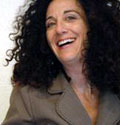 Deborah Fleischer is President of Green Impact, a strategic sustainability consulting practice that helps socially responsible companies and NGOs transform a commitment to sustainability into action. She is a LEED AP with over 20-years of direct experience working with businesses, governmental agencies and non-profits on environmental and sustainability challenges. Her expertise focuses on strategy, engagement and communications. She is the author of Green Teams: Engaging Employees in Sustainability and is a regular contributor to GreenBiz.com, where she has blogged extensively on best practices for engaging employees. Her recent clients include the University of California San Francisco, Plantronics, Business Social Compliance Initiative (BSCI), Sonoma Open Space District and the Sonoma Land Trust. You can follow her occasional tweets at @GreenImpact, join her Facebook page or check out her blog Shades of Green.
Deborah Fleischer is President of Green Impact, a strategic sustainability consulting practice that helps socially responsible companies and NGOs transform a commitment to sustainability into action. She is a LEED AP with over 20-years of direct experience working with businesses, governmental agencies and non-profits on environmental and sustainability challenges. Her expertise focuses on strategy, engagement and communications. She is the author of Green Teams: Engaging Employees in Sustainability and is a regular contributor to GreenBiz.com, where she has blogged extensively on best practices for engaging employees. Her recent clients include the University of California San Francisco, Plantronics, Business Social Compliance Initiative (BSCI), Sonoma Open Space District and the Sonoma Land Trust. You can follow her occasional tweets at @GreenImpact, join her Facebook page or check out her blog Shades of Green.
“Good ideas for reinvigorating our team and expanding our reach internally and externally.” … Webinar testimonial
If you are like most communicators, you know that text alone is just not enough—today’s employees not only want to see their leaders on video, but want to be seen themselves. YouTube, Vimeo and FaceTime are teaching your employees how powerful video is, and learning about video in their non-work life makes them want to do more with it at work.
Creating meaningful business communications is not the same as recording cute dog tricks. Your employees need to know what works, and what doesn’t. And more importantly, you and your company need to be ready for: increased demand on your IT networks; the need to put policies and procedures in place and the importance of providing training to help them get it right.
In this series you will hear top practitioners talk about how they’ve put a new generation of digital video tools to work in their organization to inspire, lead and train employees; to cultivate employee engagement by putting the right tools in the hands of employees themselves; and to integrate external and internal communications for the kind of results one can only get with truly aligned communications. We’ve found practioners from leading companies to share specifics on what works across categories including internal communications, marketing, PR, social media and human resources.
What You Will Learn:
- How leading companies use employee created video: when, where, and how
- What the IT and regulatory issues are that you need to be most concerned about
- How leaders train and manage employees who are contributing video
- How video can be better integrated with intranets and social media
- The three most important things to AVOID with employee generated content.
- AND most importantly, what kinds of good results happen when you get it right.
Presented by:
 Ronna Lichtenberg is co-founder and CEO, Videotrope. Prior to her entrepreneurial career, Ronna had a long-tenured career contributing to strategic planning and marketing initiatives at Prudential and Prudential Securities. During her tenure, she was the first woman named to Prudential Securities Operating Council. As a superior communicator and strategic consultant, Ronna’s experience incorporates wide-ranging personal experience as a communicator, including former contributing editor of “O”, the Oprah magazine and regular appearances as a workplace expert on national TV. She has published three books in ten languages (to rave reviews) and has a decade of experience as a keynote speaker with Fortune 500 companies and helping small to large businesses successfully execute business development imperatives and strategic initiatives.
Ronna Lichtenberg is co-founder and CEO, Videotrope. Prior to her entrepreneurial career, Ronna had a long-tenured career contributing to strategic planning and marketing initiatives at Prudential and Prudential Securities. During her tenure, she was the first woman named to Prudential Securities Operating Council. As a superior communicator and strategic consultant, Ronna’s experience incorporates wide-ranging personal experience as a communicator, including former contributing editor of “O”, the Oprah magazine and regular appearances as a workplace expert on national TV. She has published three books in ten languages (to rave reviews) and has a decade of experience as a keynote speaker with Fortune 500 companies and helping small to large businesses successfully execute business development imperatives and strategic initiatives.
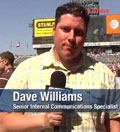 Dave Williams has been working at ESPN since 2000. Prior to joining the corporate communication team he worked with ESPN’s production operations team on all of ESPN’s studio shows including SportsCenter, Sunday NFL Countdown, and Baseball Tonight. As a senior internal communication specialist, Williams brings his vast videography, digital editing, writing, and production experience to the internal communication team. He ensures that the multi-media aspects of the organization’s internal communication strategy are of the same high-quality production techniques that ESPN employees are accustomed to seeing on their external programming.
Dave Williams has been working at ESPN since 2000. Prior to joining the corporate communication team he worked with ESPN’s production operations team on all of ESPN’s studio shows including SportsCenter, Sunday NFL Countdown, and Baseball Tonight. As a senior internal communication specialist, Williams brings his vast videography, digital editing, writing, and production experience to the internal communication team. He ensures that the multi-media aspects of the organization’s internal communication strategy are of the same high-quality production techniques that ESPN employees are accustomed to seeing on their external programming.
 Deirdré Straughan is a Technical Content specialist for Solaris Product Management at Oracle. In this position she produces and/or manages production of technical content (video, white papers, web pages) about key Solaris technologies including storage, networking, and installation. Examples of my video work can be seen here (look for the items with my name in the description). In this position she produces and/or manages production of technical content (video, white papers, web pages) about key Solaris technologies including storage, networking, and installation. Examples of my video work can be seen here (look for the items with my name in the description). Deirdré has been communicating online since 1982. Her experience managing and communicating with online communities dates back to 1993, when she began interacting with Incat/Adaptec/Roxio customers via CompuServe, the Usenet, and listserv. She also wrote, edited and managed a stable of newsletters with 140,000 subscribers, and managed websites and online strategy for Adaptec/Roxio.
Deirdré Straughan is a Technical Content specialist for Solaris Product Management at Oracle. In this position she produces and/or manages production of technical content (video, white papers, web pages) about key Solaris technologies including storage, networking, and installation. Examples of my video work can be seen here (look for the items with my name in the description). In this position she produces and/or manages production of technical content (video, white papers, web pages) about key Solaris technologies including storage, networking, and installation. Examples of my video work can be seen here (look for the items with my name in the description). Deirdré has been communicating online since 1982. Her experience managing and communicating with online communities dates back to 1993, when she began interacting with Incat/Adaptec/Roxio customers via CompuServe, the Usenet, and listserv. She also wrote, edited and managed a stable of newsletters with 140,000 subscribers, and managed websites and online strategy for Adaptec/Roxio.
With the passage of new laws and regulations to curb white-collar crime, executives are paying increasing attention to corporate governance and compliance programs. But what role do compliance programs play in employee behavior?
Research shows that compliance programs can actually do more harm than good when it comes to actual employee behavior. However, carefully designed compliance programs, supported by other elements of culture, can be instrumental in building an ethical culture that not only drives ethical employee behavior but also employee engagement and business results.
You will learn:
- Key research on the connections between ethics and employee engagement
- Four building blocks of ethical culture
- Elements of an effective ethics/compliance program
- Links between ethical culture and employee engagement
- Importance of ethical leadership and trust
- How character gets defined in leaders
- What is moral language, and how to use it
- Three strategies that can make a real difference in creating an ethical culture
- Three steps executives and managers can take to encourage ethical behavior within their organizations and departments
- Three audience segments you need to consider when designing ethics/compliance initiatives
Kate answers real-world questions on:
- Best practices in talking about ethics with employees
- How to reward employees’ for good ethical behavior
- Explaining the success of the hit TV show The Apprentice
- What channels work best when delivering the ethical rules of an organization
- Advice to those in an organization who have either observed or have strong suspicions of unethical behavior in their company
Presented by:
 Kate Nelson is a consultant, Wharton professor and author specializing in ethics program design and strategic organizational communications.
Kate Nelson is a consultant, Wharton professor and author specializing in ethics program design and strategic organizational communications.
- Formerly a senior fellow in ethics at The Wharton School, University of Pennsylvania, she currently teaches business ethics at Wharton Executive Education and to executive MBA students at the University of Delaware.
- Co-author, with Pennsylvania State University Professor Linda Klebe Trevino, of Managing Business Ethics (published by Wiley; 4th edition due in August 2006)
- Consultant on ethics and communications for 15 years
- Formerly a principal and communication practice leader for Mercer HR Consulting in Philadelphia
- Formerly vice president and head of worldwide HR communications at Citicorp in New York City; held similar positions at Merrill Lynch and Honeywell
- Guest speaker on ethics and values at many conferences and organizations, including the Conference Board, World@Work, Society for Human Resources Managers, Young Presidents’ Organization, the Ethics’ Officers Association and Wharton Executive Education.
- She has designed and/or conducted ethics training programs for numerous business schools, including Harvard, University of Chicago, Columbia, Vanderbilt, NYU, MIT, Temple and Northwestern; and for numerous organizations, including GE, Johnson & Johnson, J.P. Morgan, Prudential Securities, Morgan Stanley, Aviva, Degussa, Shell Oil, AC Nielsen, Glaxo SmithKline, Citibank, Dupont, Lockheed Martin and NASA.
- The ethics game that Kate created at Citicorp, The Work Ethic, was awarded the Gold Quill of Excellence by the International Association of Business Communicators (IABC) in 1987 and was featured in numerous media, including the Wall Street Journal, Financial Times and Fortune.
- Communications she created have been recognized by the American Institute of Graphic Artists, the Art Directors Guild, the IABC, and have been exhibited in the Whitney Museum of Art in New York.
- She received her B.A. from the College of Mount St. Vincent in New York City and has been affiliated with Wharton since 1991. Kate also is a 2002 graduate of Leadership, Inc., a Philadelphia organization that mobilizes the private sector on behalf of the community and trains executives to serve on boards of directors.
- She is a member of the Council of Communication Management (CCM).
How and why FedEx Employee Communications moved from focusing on creating more news to creating better business outcomes.
This webinar features Terry Simpson, head of employee communications for FedEx Express. After conducting a global communication assessment, Terry and her colleagues decided that the communication function needed to focus more on creating business outcomes rather than distributing more news. Working with FedEx Express leadership she identified and conducted a project in Los Angeles to improve US export volume through better managed communication. The result: 15% increase in volume and 23% increase in revenues with an overall 1,400 ROI.
What You Will Learn:
- How to work with senior leadership and a lot of data to identify opportunities to improve performance through better managed communication
- How to search for opportunities within the white spaces—the areas between functions and disciplines
- How to bring disparate groups together to improve performance through enhanced communication
- How to recognize root causes of performance problems
- The powerful role rewards play in communicating what’s important
- How to take a success and create an even bigger one with five more locations.
Questions that are answered:
- What’s the difference in managing communication to create output—a distribution business—and managing it to create outcomes—a solutions business?
- Is there a role for traditional communication practitioners in this process?
- What additional skills and knowledge do I need to move to this new level?
- How do I get started?
- How do I pick the right project that practically assures success?
- What’s in it for me if I make the shift? More money? More career opportunities? More fame?
- What’s the best way as a communication manager to move from output to focusing on solutions?
- What did FedEx stop doing when it embarked on this project? This goes to the question of staffing – were additions made to the department?
- Did you use any formal media channels to bolster your face-to-face solutions processes?
- Where do you go to get training to lead your department in this direction? What disciplines should you study?
- What pushback do you hear from communicators when you present this message? What’s the best way as a communication manager to move from output to focusing on solutions?
Who Should Purchase:
- Communications professionals who want to enhance their partnership and value to the business.
Instructor:
 Jim Shaffer is one of the world’s leading thought leaders, consultants and authors, helping businesses engage their people to achieve ultra-high levels of organizational performance. His book, The Leadership Solution (McGraw-Hill), has been hailed by leading CEOs as “invaluable for someone wanting to lead an organization into the future” and a “practical common-sense look at how leaders use communication to solve business problems.”
Jim Shaffer is one of the world’s leading thought leaders, consultants and authors, helping businesses engage their people to achieve ultra-high levels of organizational performance. His book, The Leadership Solution (McGraw-Hill), has been hailed by leading CEOs as “invaluable for someone wanting to lead an organization into the future” and a “practical common-sense look at how leaders use communication to solve business problems.”
Jim’s focus is on improving people performance: helping business leaders execute better by creating engaged people, who think and act like business owners. He blends his unique background in general management, product line management, organizational change and communication management and helps clients get at the root cause of people performance problems. His track record includes significant, quantifiable improvements in quality, service, costs, productivity and speed through a more engaged workforce.
Terry Simpson has worked in the Communications field for over 30 years in every area including broadcast, video, print, web sites, event management, strategy and content development. Terry is leading the change at FedEx Express and using communication solutions to solve business problems.
If you think performance counts now, you ain’t seen nothin’ yet! Jim Shaffer, who pioneered the results-driven approach to managing communication, will explain what others have done to become indispensable to their leaders, because they are over and over again putting money in their leaders pockets. Literally! Jim’s lively and provocative CD will reveal what companies are doing to surgically shift their priorities and focus on those parts of the organization that can drive performance results most. Using real case studies, Jim will show how companies can generate two- and three-thousand-percent returns on their internal communication investments. He’ll explore the Three Stages of Organizational Communication Maturity and explain how a department can attain increasingly higher levels of operating and financial performance.
Learn How:
- FedEx, Owens Corning and others have created significant performance improvements with returns on their investments exceeding 1,400 percent
- Honeywell cut its billing cycle by 10 days and eliminated 1.4 million process steps while improving quality
- Sara Lee reduced waste by 18 percent in five weeks at one its bakeries
Learn Why:
- Dave Brown’s CEO said: “We are absolutely convinced that there’s a competitive advantage to be gained by engaging our people through better managed communication. We’ve seen it pay off already in measurable improvements in costs and productivity.”
- Owens Corning’s senior vice president of manufacturing said, “We’ll take as many 700-percent returns as we can get.”
Discussion Topics:
- Why the communication function in every business must measurably increase the value it adds—or die
- What other companies are doing about it and how they’ve moved from an output to an outcome-generating organization
- What you can do next to take your department to the next level on the maturity curve
- What questions to ask to identify what matters most to your business
- How to set up an outcome-based project that generates huge financial returns
- How to measure your impact and your return
- How to shift your work from low value-adding to high value-adding
- How to get junk off your plate, because it doesn’t contribute to the bottom line
Who Should Purchase:
- Corporate communications
- Non-profit communications
- Media relations
- Public affairs
- Public relations
Instructor:
 Jim Shaffer is one of the world’s leading thought leaders, consultants and authors, helping businesses engage their people to achieve ultra-high levels of organizational performance. His book, The Leadership Solution (McGraw-Hill), has been hailed by leading CEOs as “invaluable for someone wanting to lead an organization into the future” and a “practical common-sense look at how leaders use communication to solve business problems.”
Jim Shaffer is one of the world’s leading thought leaders, consultants and authors, helping businesses engage their people to achieve ultra-high levels of organizational performance. His book, The Leadership Solution (McGraw-Hill), has been hailed by leading CEOs as “invaluable for someone wanting to lead an organization into the future” and a “practical common-sense look at how leaders use communication to solve business problems.”
Jim’s focus is on improving people performance: helping business leaders execute better by creating engaged people, who think and act like business owners. He blends his unique background in general management, product line management, organizational change and communication management and helps clients get at the root cause of people performance problems. His track record includes significant, quantifiable improvements in quality, service, costs, productivity and speed through a more engaged workforce.
Jim leads the Jim Shaffer Group, a consultancy devoted to creating compelling places to work—where people are actively engaged in building and sustaining winning organizations. Previously, he was a principal, senior consultant and leader of a Towers Perrin center of excellence. He was one of the architects and leading practitioners of the firm’s global change management consulting practice. Prior to that, he served as press secretary to Kansas Governor Robert B. Docking, headed public relations and advertising in two Chicago-based businesses, and served as a marketing product line manager.
Jim is a recipient of the International Association of Business Communicators’ prestigious Fellow award, and he was named “Communicator of the Year” by IABC’s Washington, D.C. chapter. Jim is a regular contributor to many business publications and a frequent speaker at leadership groups and professional associations. He has taught in the graduate schools at George Washington University and The University of St. Thomas. His clients have included IBM, The Mayo Clinic, Verizon, Toyota, FedEx and many more.
Is your communication planning approach connected to the goals of your business? Can you measure the value of your communication planning efforts once the plan has been executed? So often as communication professionals we are asked to create plans that focus on communication tactics, without assessing the real strategic impact of what the plan will accomplish. This Webinar provides a step-by-step approach to developing a communication plan that is truly strategic and connected to your business.
What You Will Learn:
- Creating a vision of the desired future state, based on the current situation
- Identifying what is important to focus on, based on the vision
- Developing clear objectives based on your priorities
- Aligning messaging, strategy and tactics to your objectives
- Gaining buy in for your plan, based on the impact it will have on the business
Questions that will be answered:
- What does is mean to be strategic?
- How do you develop a meaningful vision?
- How do you determine which elements of the vision are most important?
- What are the strategies and tactics that will have the most impact?
- How do you gain support for your plan?
- What are effective ways to measure impact?
Who Should Purchase?
- Communications professionals who want to enhance their partnership and value to the business.
Instructor:
 Barbara Fagan-Smith is the founder and CEO of ROI Communications, Inc., an award-winning internal communications consulting firm focused on helping large organizations adapt and succeed in times of change. Building on more than two decades of experience in corporate communications and journalism, she leads ROI’s work with Fortune 500 companies, helping them develop and manage effective internal communication projects that deliver clear business results.Since its launch in 2001, ROI Communications has worked with a broad array of major clients, including Hewlett- Packard, Sun Microsystems, Adobe Systems, Blue Shield of California, Cisco Systems, The Gap, Maxtor, Oak Technology and DreamWorks. ROI Communications was most recently recognized with multiple awards from the American Society of Professional Communicators and the International Association of Business Communicators (IABC) for its standard-setting work in change communications.Prior to founding ROI Communications, Barbara was the director of employee and electronic communications at Quantum Corporation and director of interactive communications at Simply Interactive, Inc.
Barbara Fagan-Smith is the founder and CEO of ROI Communications, Inc., an award-winning internal communications consulting firm focused on helping large organizations adapt and succeed in times of change. Building on more than two decades of experience in corporate communications and journalism, she leads ROI’s work with Fortune 500 companies, helping them develop and manage effective internal communication projects that deliver clear business results.Since its launch in 2001, ROI Communications has worked with a broad array of major clients, including Hewlett- Packard, Sun Microsystems, Adobe Systems, Blue Shield of California, Cisco Systems, The Gap, Maxtor, Oak Technology and DreamWorks. ROI Communications was most recently recognized with multiple awards from the American Society of Professional Communicators and the International Association of Business Communicators (IABC) for its standard-setting work in change communications.Prior to founding ROI Communications, Barbara was the director of employee and electronic communications at Quantum Corporation and director of interactive communications at Simply Interactive, Inc.
Before her career in corporate communications, Barbara worked as a London-based television producer for ABC News, where she covered the revolutions in Eastern Europe and the 1991 Gulf War. Earlier, she covered international business and produced national radio programs for ABC. She holds a B.A. in Journalism and Communications from Humboldt State University.
Learn how to gain control of your production processes, no matter how obstacle-ridden they might be.
The creative fun of communicating can be quickly overshadowed by the headaches of getting things through the process. Whether the source of your migraine is source reviews, management approvals or just keeping all the moving parts in sync, relief is on the way. You can gain control of your production processes, no matter how obstacle-ridden they might be, and this session teaches you how!
The six-person Editorial Services team at Philip Morris USA produces hundreds of stories, speeches and other writing projects per year. Add to this huge volume the challenges of working in a closely watched industry and the approval process becomes extremely complex. Hear how this team created tools — from a Job Request Form to an online Content Tracker — that keep stories moving at an amazing rate. Find out how they use client feedback, not only to improve their writing but also to improve their content management tools.
Learning topics:
- Why and how to create content management tools, and why you should keep tweaking them
- How to master the tactics of communication production, while staying focused on strategy
- How to minimize management and legal approval headaches — before they start
- How to manage internal clients’ expectations
- How to influence others in your company to follow your production processes
Robert and Denise answer real-world questions on:
- The decision to outsource writing and the tools that have helped make this work smoothly
- The response rate on post-work survey, and how to encourage clients to fill the forms
- Phillip Morris’ Content Tracker
- Additional tools in the works
- Integrating proofreading into the system and other quality control measures
- Typical turnaround time on review processes
- Getting information released
Who should purchase:
This practical, information-packed learning opportunity is ideal for managers and professionals in:
- Corporate Communications
- Internal Communications
- Public Affairs
- Web Management
- Speechwriting
- Publication Management
- Anyone who is responsible for producing content
- College/university libraries and bookstores
About the Instructors:
 Robert J. Holland, ABC, is owner of Holland Communication Solutions LLC in Richmond, Va. After more than 12 years in corporate communications with AT&T, Lucent Technologies and Capital One, Robert formed his company in 2000 to help clients align communication programs with business goals. He has helped leading organizations such as the Federal Reserve Bank of Richmond, Freddie Mac, Media General and Wells Fargo with services ranging from strategic communication planning to measurement. He is a frequent regional and national speaker, and he writes an award-winning column, “Communication at Work,” for Richmond.com. He is author of Prove Your Worth: The Complete Guide to Measuring the Business Value of Communication, published by Ragan Communications. Robert is also co-leader of the Communitelligence Internal Communications community.
Robert J. Holland, ABC, is owner of Holland Communication Solutions LLC in Richmond, Va. After more than 12 years in corporate communications with AT&T, Lucent Technologies and Capital One, Robert formed his company in 2000 to help clients align communication programs with business goals. He has helped leading organizations such as the Federal Reserve Bank of Richmond, Freddie Mac, Media General and Wells Fargo with services ranging from strategic communication planning to measurement. He is a frequent regional and national speaker, and he writes an award-winning column, “Communication at Work,” for Richmond.com. He is author of Prove Your Worth: The Complete Guide to Measuring the Business Value of Communication, published by Ragan Communications. Robert is also co-leader of the Communitelligence Internal Communications community.
Denise Koenig is manager of Editorial Services for Philip Morris USA in Richmond, Va. She has worked for the company since 1984, from coordinating and editing plant-level communications in Louisville, Ky., to managing communications for multiple manufacturing plants in Richmond. Beginning in 2003, she built the team of five editorial consultants she now manages, all of whom work in their individual offices. Denise manages the team’s production of content for executive communications, the pmusa.com Web site, the intranet, speeches and special publications. She is a graduate of Ball State University with a bachelor’s in journalism and political science.
Organizations have been trying to crack the code on employee engagement for at least 30 years, with pretty dismal results. Gallup’s October 2011 Employee Engagement Index reported only 29 percent of employees are actively engaged in their jobs, 52 percent are not engaged and 19 percent are actively disengaged.
Could these results be because we’ve been so focused on the how-to of employee engagement (tools and best practices) that we’ve glossed over the whys of basic human motivation and performance in the workplace?
This webinar is based on the principles and practices from the recently published business fable, Getting to the Heart of Employee Engagement, by author Les Landes. The book starts with the somewhat provocative premise that employee engagement is powered mainly by the uniquely human qualities of imagination and free will – and how the two are inseparably connected.
According to Landes, when you combine imagination and free will with other key ingredients – security, self-esteem, responsibility and accountability – you create a virtual “human rocket” that propels and guides employees to extraordinary performance.
Building on that theoretical framework, Landes will offer a number of practical ideas you can use in your organization for policies, systems and processes to create the kind of culture where employees love to work and customers love doing business.
Bonus feature: The Q&A conversation at the end will be started by two internal employee engagement experts: Jim Shaffer, Jim Shaffer Group, consultant, author and speaker; and Roger D’Aprix, RPO Communications, consultant, lecturer and author.
Already a member? View Replay
What You Will Learn:
- The power of trust … What it takes and how to get it.
- Play, work and hell … Why you should STOP trying to motivate “your people.”
- Double-talk, distortions, and disconnects … How to keep employees tuned in and turned on using the principles of “Real-Life, Real-Time Communication.”
- The problem with employee suggestion programs … Why most of them get such dismal participation, and how to create a system that produces dramatic results.
- Getting to the heart of company culture … Why it’s critical to know where your culture is now before you start beating a path to where you want to be in the future.
- Faking sincerity … Why transparency and truth are increasingly critical in today’s workplace.
- The program trap … Why many corporate initiatives seem so phony to employees, and what it takes to make them “real.”
Presented by:
 Les Landes is President of Landes & Associates, a management consulting firm that provides services in team/organizational planning, marketing and public/media relations, organizational communication, employee engagement, performance improvement systems and, executive coaching, and meeting facilitation. The firm serves clients in various industries, as well as government and non-profit organizations.
Les Landes is President of Landes & Associates, a management consulting firm that provides services in team/organizational planning, marketing and public/media relations, organizational communication, employee engagement, performance improvement systems and, executive coaching, and meeting facilitation. The firm serves clients in various industries, as well as government and non-profit organizations.
He is the author of numerous published articles on topics related to communication and organizational performance. His articles and interviews have appeared in several publications, including Communication World, The Public Relations Strategist, Executive Speeches, Training, Total Quality Newsletter, Quality Progress, Strategy and Leadership, Journal for Quality and Participation and more. He also writes a regular e-column called Inside Out that focuses on aligning employee engagement with marketing communication.
His new book, Getting to the Heart of Employee Engagement, opens the door to a fresh understanding and appreciation for human nature in the workplace, and it sets the stage for a breakthrough in optimizing employee performance. This unique business fable shows how tapping into the power and purpose of imagination and free can create the type of organization where employees love to work and customers love doing business.
Who Should Attend
This webinar is primarily aimed at professionals involved in helping their organizations improve employee engagement, including:
- Internal communications
- Public relations
- Human resources
- Executive communications
- Public affairs
- Investor relations
- Senior management
“I liked the advice to avoid ‘flavour of the day’ by not naming a campaign or program and instead making it part of our everyday way of doing things.”
